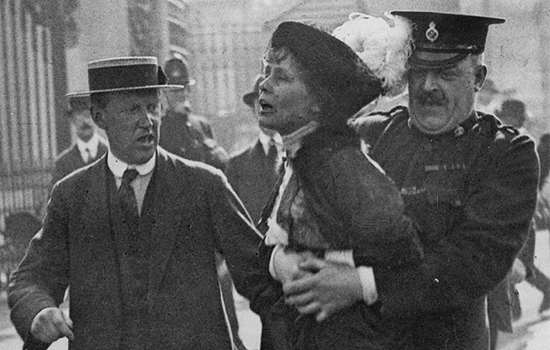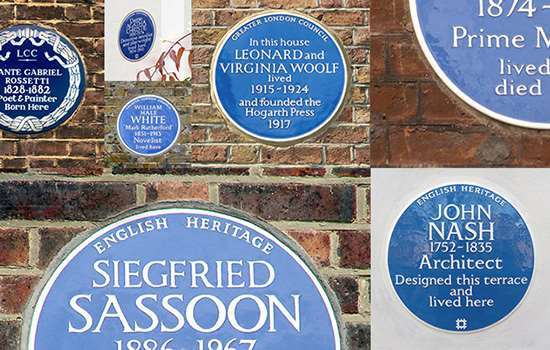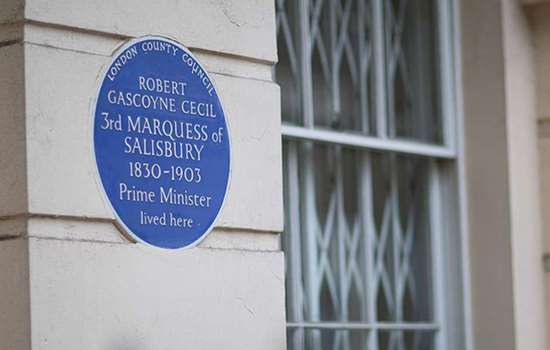HEPBURN, Audrey (1929–1993)
Plaque erected in 2025 by English Heritage at 65 South Audley Street, W1K 2QU, City of Westminster
All images © English Heritage
Profession
Actress
Category
Philanthropy and Reform, Theatre and Film
Inscription
AUDREY HEPBURN 1929–1993 Actress lived in a flat at number 65
Material
Ceramic
Audrey Hepburn was an actress and fashion icon, and one of the most recognisable faces in the world. Hepburn is commemorated by a blue plaque at the flat at 65 Audley Street, where she lived when she made her breakthrough as a star.
Audrey Kathleen Hepburn-Ruston was born in Brussels on 4 May 1929. Her father was a businessman and her mother, Baroness Ella van Heemstra, was from an aristocratic Dutch family. They initially lived in Belgium, where her parents developed strong fascist sympathies and fundraised for the British Union of Fascists. Her father left the family in 1935, and when her parents divorced three years later, he largely disappeared from Audrey’s life.
From the later 1930s, Audrey went to a small private school at Elham, near Folkestone, Kent. She flew back to be with her family in December 1939 and spent the war in the occupied Netherlands. Audrey was known as Edda, to avoid sounding too British, and did some work for the Dutch resistance as a child courier. She witnessed the deportation of Jews, her uncle was shot in a Nazi reprisal in 1942, and she suffered from anaemia and jaundice in the famine of the later war years.
Acting and South Audley Street
Amid all the wartime hardships, Audrey showed promise as a dancer and after the war she moved to Amsterdam with her mother to study ballet. They relocated to London in the late 1940s and Audrey passed an audition to train at the Ballet Rambert. Though Ella was an aristocrat, she still had to work during the difficult post-war years and took various jobs before finding one as a caretaker and concierge that came with a flat at 65 South Audley Street in Mayfair.
The flat, which was probably on the top floor, was part of a large brick-built corner block with decorative stonework that dates from the last decade of the 19th century. There was a provisions shop on the ground floor and famed florist Constance Spry ran the shop next door. As you look at the building, Hepburn’s plaque is positioned slightly to the left of number 65’s frontage to match the position of Spry’s blue roundel.
Hepburn recalled her sense of freedom of being in London after life in the Netherlands under Nazi occupation, and her mother’s joy at being able to shop for shoes, though they were shocked by the limited British food ration. She and her mother began to use the name Hepburn, most likely to distance themselves from the pre-war political activities associated with the name Ruston. They used buses and the underground to save money for taxis when it rained. Although the areas she would have walked were notorious for prostitution at the time, Hepburn recalled feeling ‘so safe’ when returning home at night from dancing shows at Ciro’s nightclub.
South Audley Street was Audrey’s base when her acting career took off. After moving to London, she decided she lacked the precision and the physique to be a ballet dancer and sought other opportunities. Her first acting role was in a 1948 film for KLM entitled Dutch in Seven Lessons, playing an air hostess. She joined the chorus line in the American hit musical High Button Shoes (December 1948) and appeared in revue shows, Sauce Tartare (1949) and Sauce Piquante (1950).
Casting directors soon spotted her notable good looks, and she was described as one of Britain’s rising stars. She appeared in films including Young Wives Tale (1951), in which the fact that her first screen kiss took 40 takes was front page news. She had just one line in the classic Ealing comedy The Lavender Hill Mob (1951) but its star, Alec Guinness, recalled her being remarkable for ‘her faun-like beauty and presence’.
Broadway and the big time
In November 1951 Hepburn made her Broadway entrance in Gigi, having been selected for the role by Colette, the author of the original novel. Hollywood soon came calling. In her breakthrough film role, she played a princess in the romantic comedy Roman Holiday (1952). She won an Oscar and a BAFTA for the role and her face graced the cover of Time and Life magazines.
While performing in her Tony-winning Broadway stage role in Ondine (1954), Hepburn met the American actor Mel Ferrer and, against the wishes of her mother, married him. They made their main base in Switzerland, and had a son, Sean, in 1960.
Hepburn’s subsequent film highlights included Sabrina (1954); Funny Face (1957), playing opposite Fred Astaire; The Nun’s Story (1959) and most famously Breakfast at Tiffany’s (1961), in which she played the upmarket call girl Holly Golightly. She played Eliza Doolittle in My Fair Lady (1964), a role she had long cherished, but had to have her singing partly dubbed.
Later life and UNICEF
In the late 1960s, her career became less active, though highlights included playing Maid Marian opposite Sean Connery in the British film Robin and Marian (1976), and a cameo in the romantic fantasy Always (1989), which she did out of admiration for Steven Spielberg. Her marriage to Ferrer was dissolved in 1968 and the following year she married Andrea Dotti, an Italian psychiatrist with whom she had a son, Luca, in 1970. After a divorce in 1980, she spent her later years with Dutch actor Rob Wolders.
In 1988 Hepburn took up a role as a UNICEF ambassador, working on behalf of underprivileged children in places affected by disasters. Having herself been the beneficiary of the relief effort in post-war Holland, this was a deeply personal mission, which took her to Ethiopia, Turkey, South America (1988), Central America, Sudan and Bangladesh (1989), Vietnam (1990) and Somalia (1992).
The work led to her being awarded the Presidential Medal of Freedom, the highest civilian award of the United States, in December 1992. Unfortunately, she was too unwell to accept it in person, having fallen ill not long after returning home from Somalia with what turned out to be cancer of the appendix: she had smoked all her life, at times heavily. Audrey Hepburn died at her home in Switzerland on 20 January 1993, aged 63.


